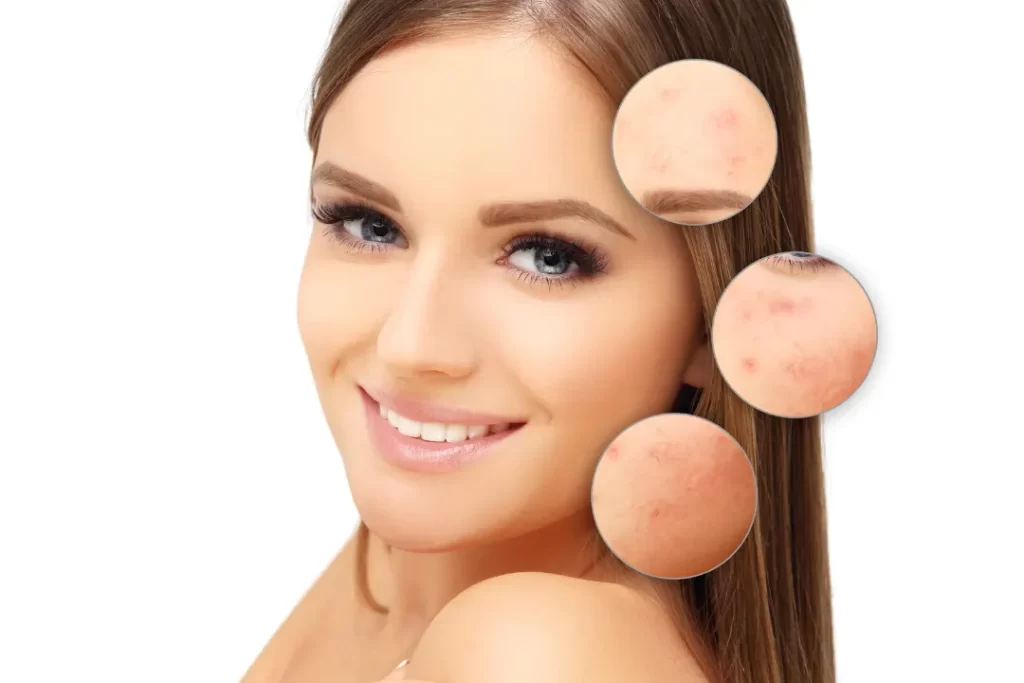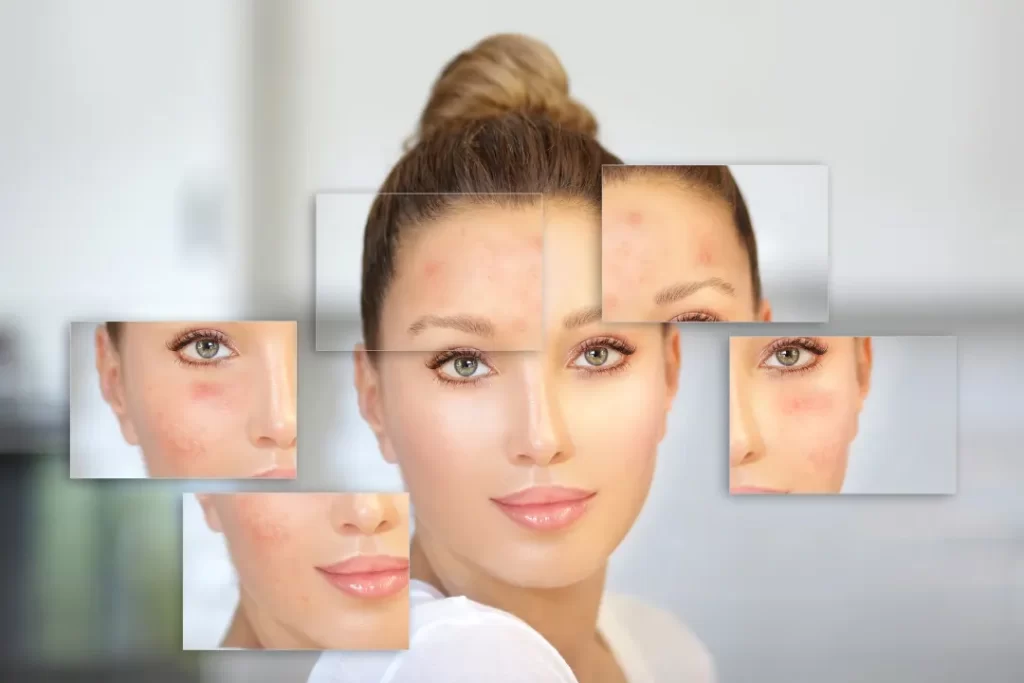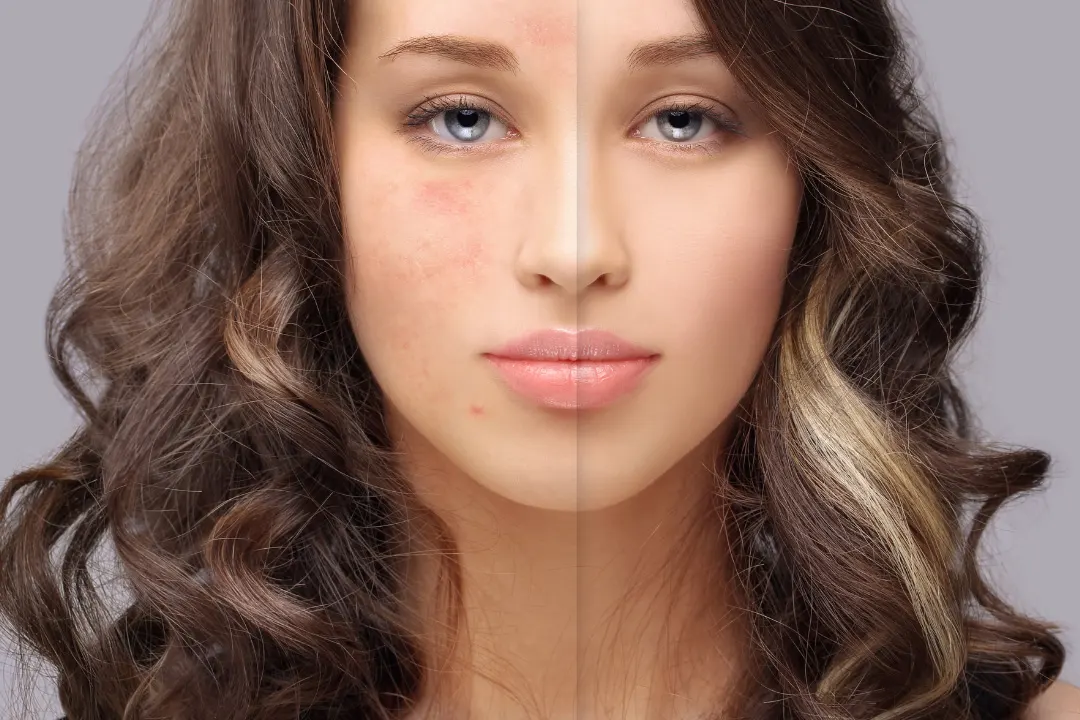The Best Ingredients for Hyperpigmentation:
If you’re struggling with a case of hyperpigmentation, know that you’re not alone. This common skin condition affects millions of people worldwide. Hyperpigmentation causes dark spots on the skin, especially around the nose, chin, cheeks, forehead, and ears, but they may appear anywhere on the body. It occurs when too many melanocytes, the specialized skin cells responsible for producing melanin, are present. Melanin is a dark biological pigment that protects our skin, but excessive sun exposure, hormonal changes, genetics, age, inflammation, or other factors can trigger its overproduction.
You May Also Like:
Anti-Aging Benefits of an Oxaloacetate Supplement
Shiseido Eye Cream vs Luma Lift Anti-Wrinkle Eye Cream – Which One Comes Out on Top?
Same condition – three distinct types
There are three types of hyperpigmentation: age spots, melasma, and post-inflammatory trauma.
Age spots (liver spots or sun spots) usually appear in older adults, but anyone who spends a lot of time in the sun can get them. In this case, your body is trying to protect your skin from sun overexposure by producing more melanin.
Melasma (“the mask of pregnancy”) mainly affects pregnant women due to the hormonal changes that occur during pregnancy. However, it can also manifest as a side effect of taking birth control pills, and it seems to affect people with medium to darker skin tones.
Post-inflammatory hyperpigmentation can appear if you’ve had an inflammatory skin condition such as acne or eczema. It can also result from skin injuries like cuts, burns, and chemical exposure.

Is hyperpigmentation a health concern?
While hyperpigmentation, in most cases, is not indicative of a serious health condition, it can be symptomatic of some autoimmune and gastrointestinal diseases, metabolic disorders, and vitamin deficiencies. Certain medications, such as chemotherapy drugs, antibiotics, and anti-seizure drugs, may also cause hyperpigmentation.
But even though your case of hyperpigmentation is not a health risk, you shouldn’t have to live with it if you don’t want to. Many seek cosmetic treatment to remove the blotches, spots, or patches caused by this condition. For most people, quality topical treatments work well and are the least expensive and least invasive kind of treatment.

Successful topical treatments include varying formulations of the best ingredients for hyperpigmentation
High-quality topical treatments will include cosmeceutical products that do far more than cleanse and beautify; they’re pharmaceuticals that cure and heal. The term “cosmeceutical” was first used by Dr. Albert Kligman of the University of Pennsylvania in 1984 when he described a cosmeceutical product as “a topical preparation that is sold as a cosmetic but has performance characteristics that suggest pharmaceutical action.”
The Best Ingredients for Hyperpigmentation is an original (Health11News) article.
These are some of the best ingredients for hyperpigmentation contained in topical treatments:
Alpha Arbutin helps reduce pigmentation by blocking tyrosinase, an enzyme responsible for producing melanin.
Alpha Hydroxy Acids (AHAs) exfoliate (remove) dead cells from the skin’s surface, which helps to lighten dark spots. The following AHAs are often used in skin treatment products: lactic acid, glycolic acid, malic acid, citric acid, tartaric acid, mandelic acid, and kojic acid.
Vitamin C (topical version) protects the skin from sun damage. It also reduces pigmentation, stimulates collagen production, and improves elasticity.
Niacinamide (topical version of vitamin B3) Data suggests that it can lighten skin by inhibiting the production of melanin, reducing hyperpigmentation.
Retinoids (Retinol-Topical vitamin A) are some of the fastest-acting and best ingredients for hyperpigmentation because they speed up cell turnover. Retinol also promotes collagen production and lightens pigmented areas creating a more even skin tone.
Fulvic Acid/(Minerals) is known for improving cell function. It can neutralize toxins and transport nutrients to skin cells. It also reduces inflammation.
Salicylic acid is an excellent anti-inflammatory, has proven to decrease post-acne hyperpigmentation, and has a whitening effect on the skin.
Zinc Oxide is the primary ingredient in sunscreen and, when used daily, can help prevent further skin darkening.
Hydroquinone cream, which lightens dark spots by inhibiting melanin production, can be added to the treatment protocol for hyperpigmentation.

The Best Ingredients for Hyperpigmentation is (Health11News) report.
Truth Treatments Systems uses the best ingredients for hyperpigmentation
“Skin beauty is skin health,” says Benjamin Knight Fuchs, a registered pharmacist, nutritionist, skincare chemist, and founder of Truth Treatment Systems. His line of cosmeceutical products heals and nourishes the skin by working with its biochemistry. Truth Treatment products contain topical nutrients in a proprietary transdermal base that directly delivers the nutrients past the surface layers of the skin into the skin cells – where healing and rejuvenation occur.
In an article released by Boundless Media Inc. in July 2021, when speaking directly to the issue of hyperpigmentation, Fuchs says:
“From a topical perspective, while prescription hydroquinone remains the gold standard in medications used to lighten the skin, anti-pigmentation benefits can also be achieved with the application of retinol, glycolic and salicylic acids, and Vitamin C, especially in its fat-soluble form, directly onto dark spots.”
Truth Treatment Systems has formulated a Hyperpigmented Health System available on its website along with a short educational video. This product contains a high dose of Vitamin C, Retinol, acids to minimize existing discoloration, Zinc Oxide to protect against future damage, and Fulvic Minerals to enhance cellular activity.

The best ingredients for hyperpigmentation are available to you – what’s next?
Now that you know the best ingredients for hyperpigmentation and a suggested topical treatment option, you can decide your next step in addressing your condition. Maybe you’ll want to do more research (we’ve provided links below for you). Also, consider that depending upon which type of hyperpigmentation you have, lifestyle changes such as monitoring your sun exposure, applying sun protection, and addressing any nutritional or hormonal issues go a long way in assisting whatever treatment option you choose.
For further research:
Understanding Popular Skin Care Ingredients
Cosmeceuticals – do they work? | British Skin Foundation
Hyperpigmentation: Age Spots, Sun Spots & Liver Spots
Hyperpigmentation: Types, treatment, and causes
topical-retinoids-for-pigmented-skin
Hyperpigmentation in a middle aged woman: a common yet underdiagnosed condition – PMC.
Important Note: The information contained in this article (The Best Ingredients for Hyperpigmentation) is for general informational purposes only, and should not be construed as health or medical advice, nor is it intended to diagnose, prevent, treat, or cure any disease or health condition. Before embarking on any diet, fitness regimen, or program of nutritional supplementation, it is advisable to consult your healthcare professional in order to determine its safety and probable efficacy in terms of your individual state of health.
Regarding Nutritional Supplements Or Other Non-Prescription Health Products: If any nutritional supplements or other non-prescription health products are mentioned in the foregoing article, any claims or statements made about them have not been evaluated by the U.S. Food and Drug Administration, and such nutritional supplements or other health products are not intended to diagnose, treat, cure, or prevent any disease.


